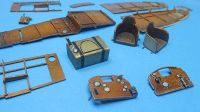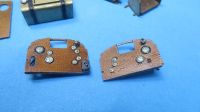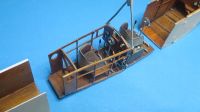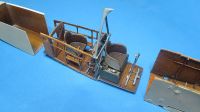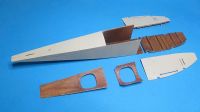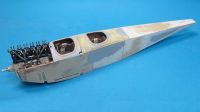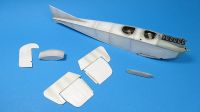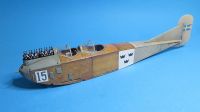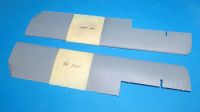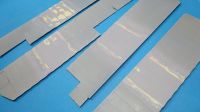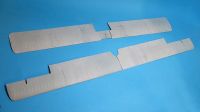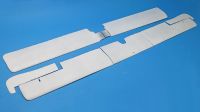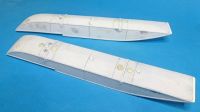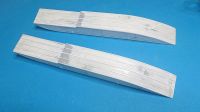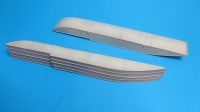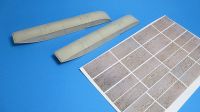Wingnut Wings 1/32 Albatros B.II Converted into a Swedish Thulin G
By Kent Karlsen
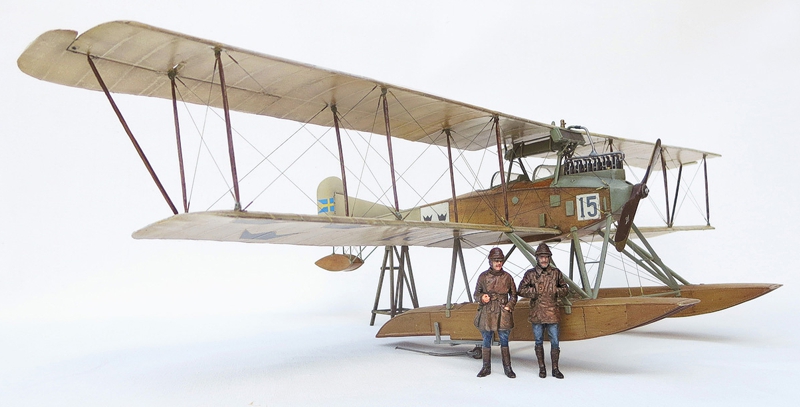
Thulin G ‘Flygbåt No.15 - Marinens flygväsende’ (Sweden)
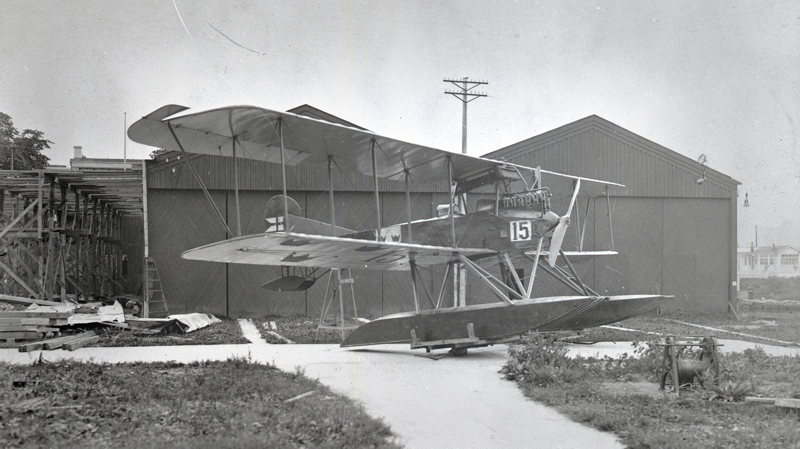
Photo of #15 after completion. Photo courtesy of ‘Flygvapenmuseum’ Linköbing in Sweden.
The Thulin G seaplane was a Swedish derivative of the German Albatros B.II. During WWI Sweden was a neutral nation and did not participate in the hostilities, but they needed to secure their neutrality. One year after the outbreak of the First World War, the aviation pioneer Enoch Thulin founded a airplane factory in Landskrona. They received an order from the Swedish navy for five seaplanes of the type Thulin G. It was the first large order for a military aircraft designed in Sweden. They were used for reconnaissance at sea and stationed at several naval air bases along the Swedish coast: Karlskrona, Vaxholm, Landskrona, Hägernäs og Göteborg.
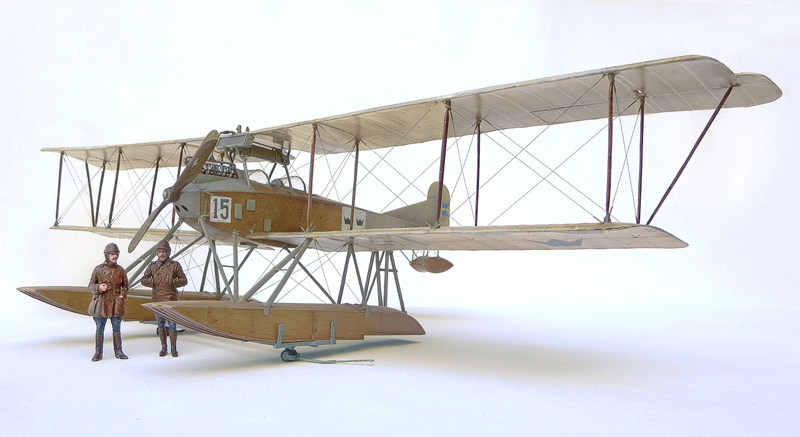
The build/conversion of the Albatros B.II kit into the Thulin G
I wasn’t really aware of what this conversion would entail, other than the enlarged wings, floats and rudder. Well, it would be a very enlightening experience. The further the build went on the more that had to be altered. I had a lot of help from the ‘Flygvapenmuseum’ in Sweden with information photos and measurements.
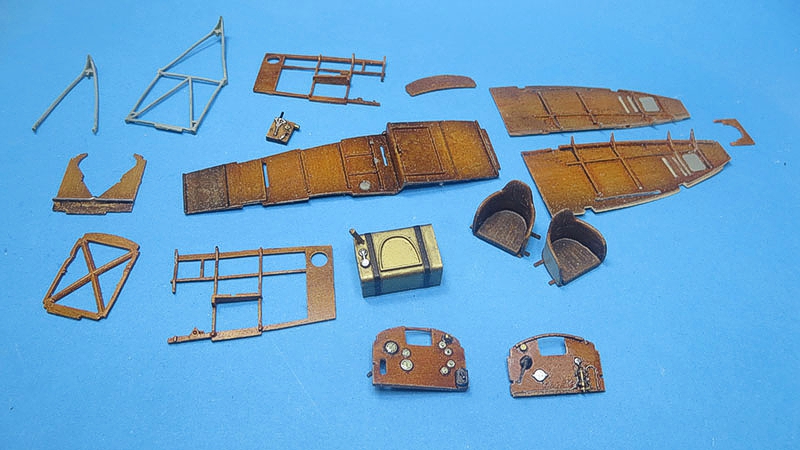
Interior: Wooden parts of the interior were painted with oils over acrylics with some shading, same with the leather seats.
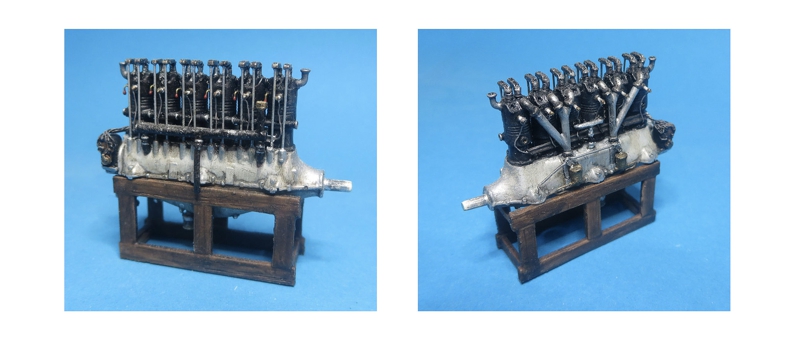
Engine: The Mercedes D.II engine was replaced by the ‘stronger’ Benz Bz III. Many details were added to the engine.
Fuselage: A new rear fuselage was needed + elevators & a new rudder. Most of the fuselage was converted too. The Daimler-Mercedes engine had to be replaced by a Benz Bz III. Nose was vacformed. The Radiator was the type attached to the top wing and was a ‘Melius’ resin part. The rear float was scratched using styrene sheets.
Wings: The main issue is the larger wingspan of the Thulin G, 54 cm compared to the 40 cm of the Albatros B.II kit. Resin parts to expand the wingspan were fitted 4 times in every wing, sanded to fit the original wings.
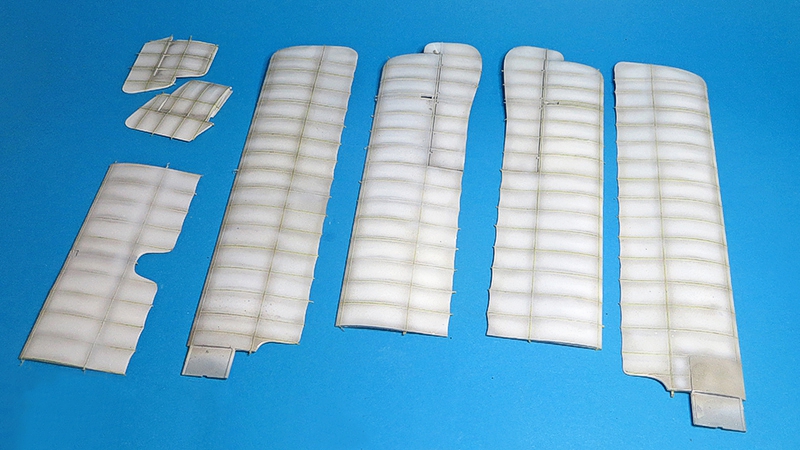
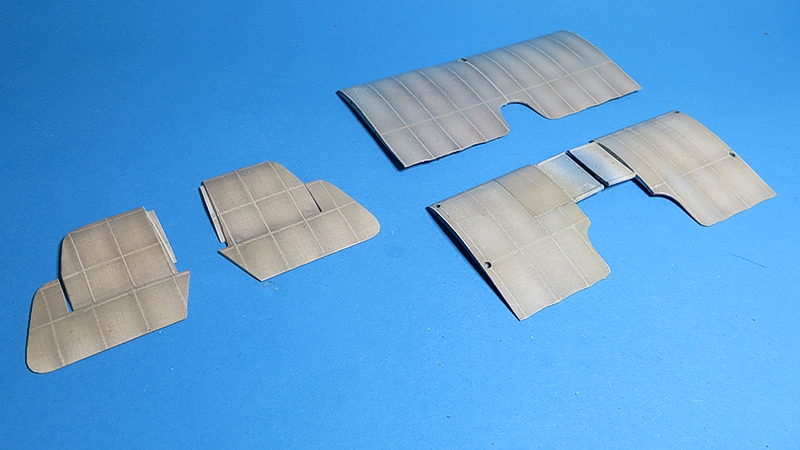
Pre-shading was done and all the surfaces were ‘wrapped’ in home made decals with a canvas texture surface.
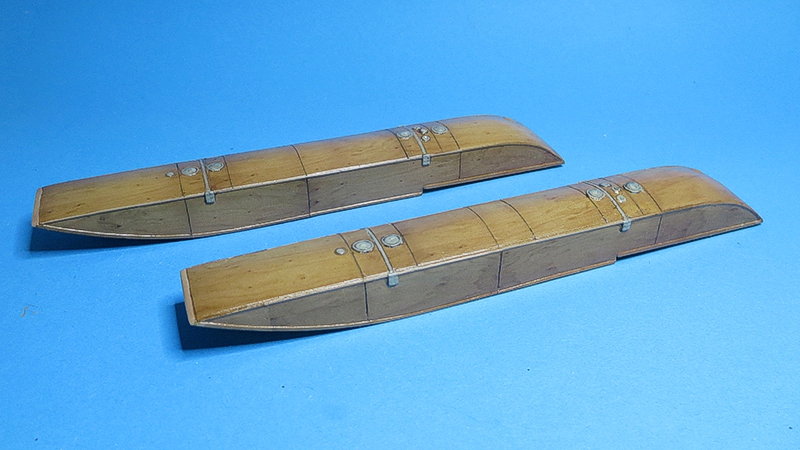
Floats: The floats are constructed with 1 mm styrene sheets and details are done with thin strips of styrene. Pre-shading with a light shading. Home made decals of ‘plywood’ were used as decals for the floats.
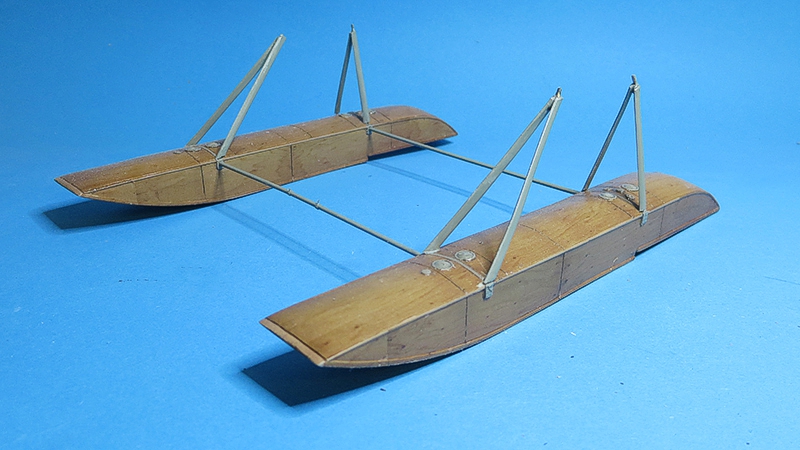
Profiles for the connection of the floats to the fuselage are made from sanded brass profiles to create a stable platform.
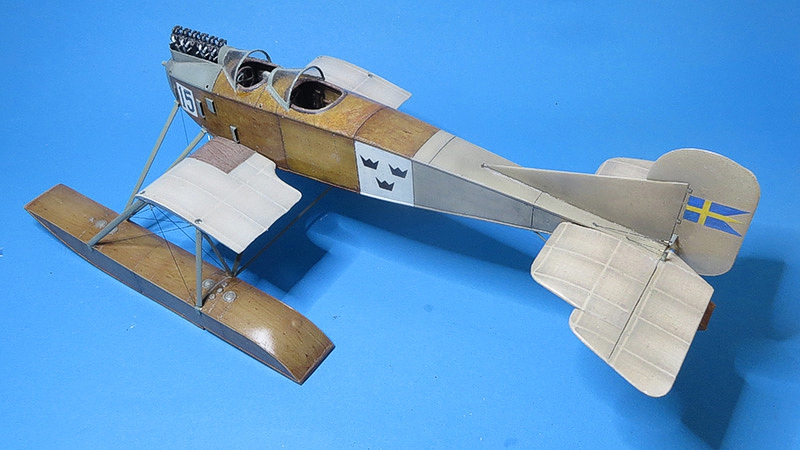
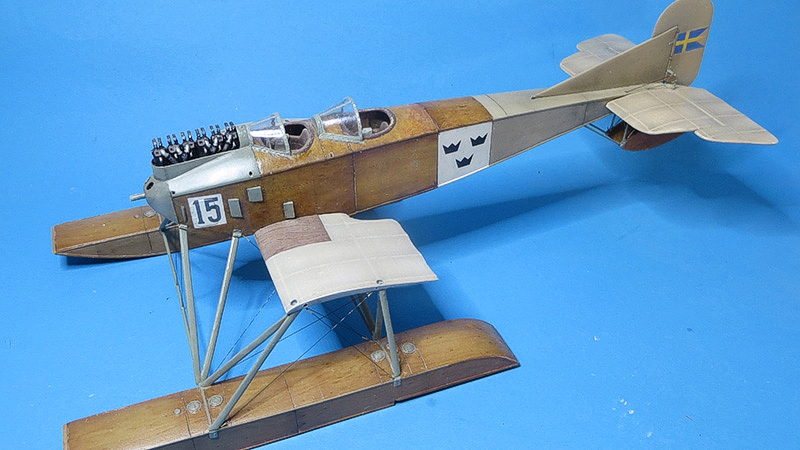
Assembly: The floats were attached, and the rigging was done with my preferred method using monofilament fishing line and hollow brass pipes.
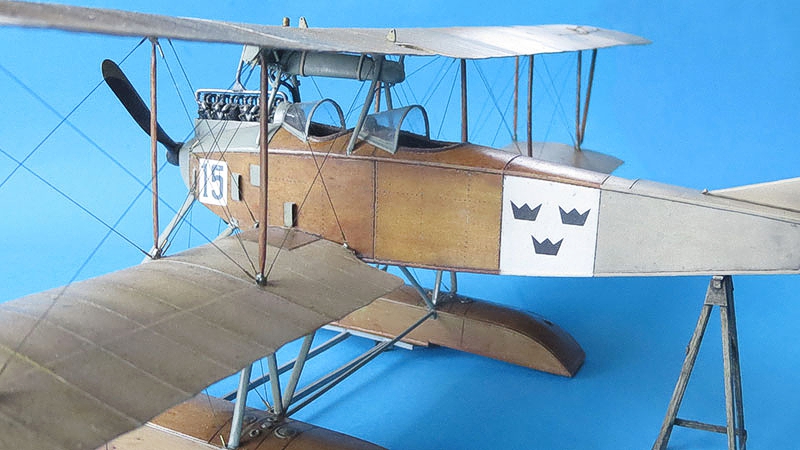
Completion: There were many other details that were needed to get to the finishline of the Thulin G build. Vacuformed ‘canopies, cowlings for the Benz Bz III Engine, enlarged ailerons, petrol tank, decals etc.
Original Aircraft
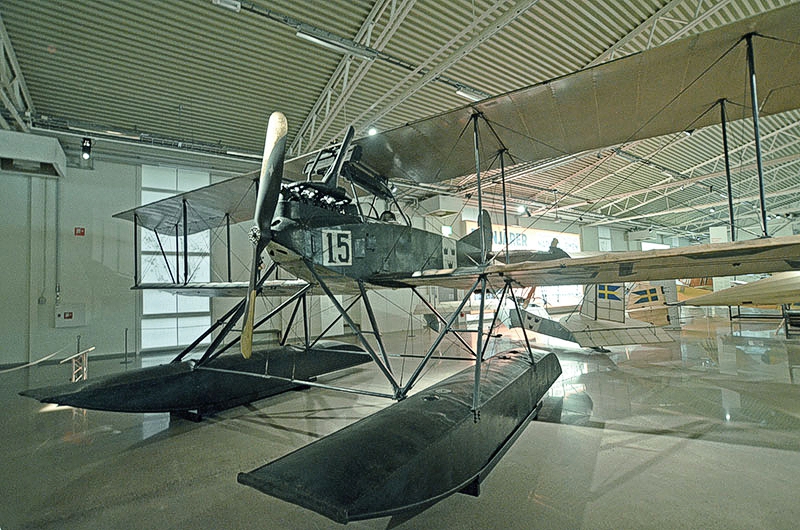
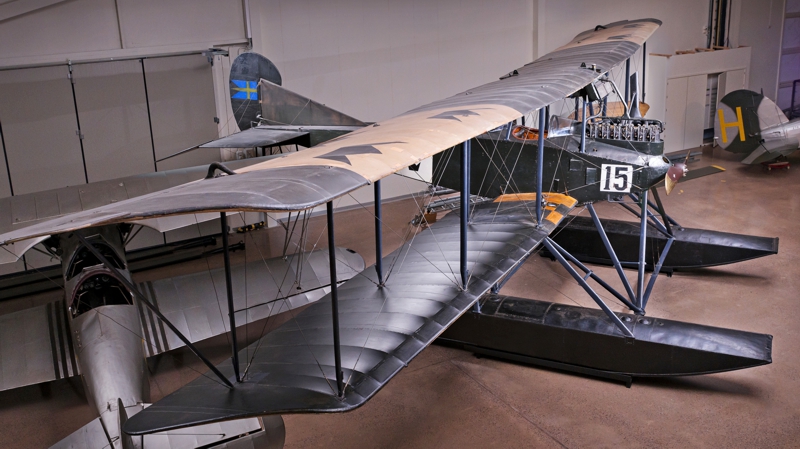
The Thulin G No. 15 survives to this day and is on display at the ‘Flygvapenmuseum’ Linköbing in Sweden. Photos courtesy of the museum.
Awards
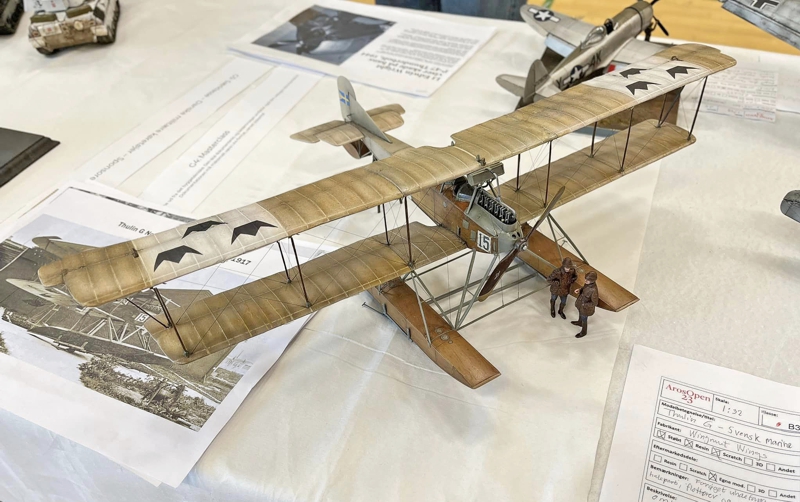
At the event AROS Open 2023 Denmark, the Thulin G conversion of the Wingnut Wings Albatros B.II came in #1 in the category ‘Masterclass’.

At the C4 Open in Malmö 2022, it was awarded ‘best model with a Swedish connection’. Also, a Special award from IPMS Stockholm and a special prize from IPMS Denmark.
© Kent Karlsen 2023
This article was published on Saturday, October 07 2023; Last modified on Thursday, October 12 2023

